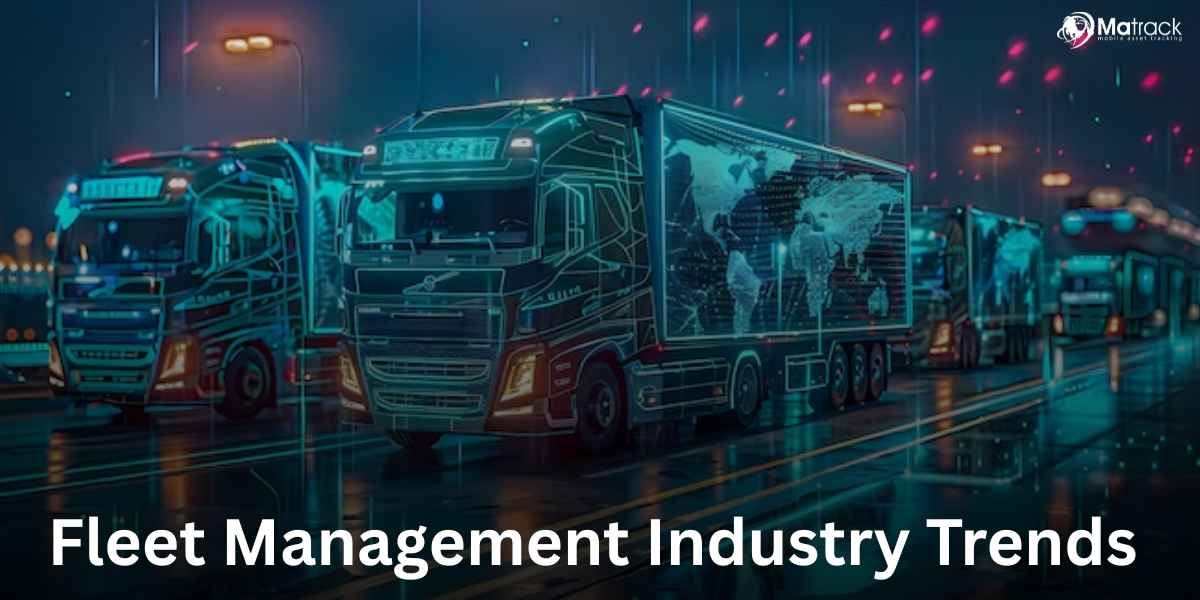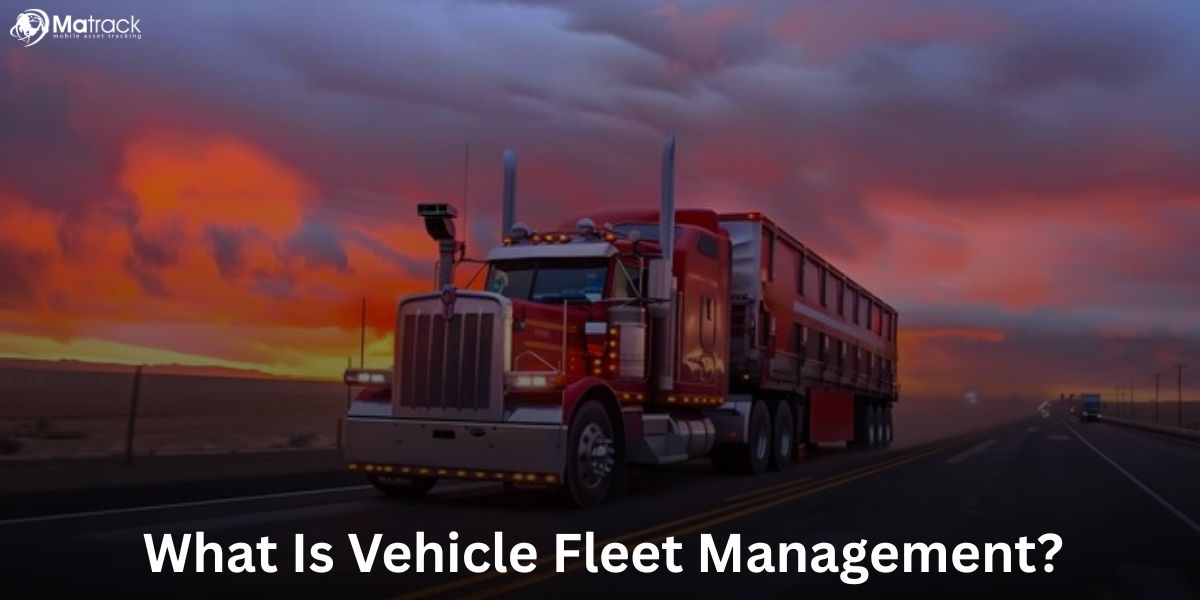Key Takeaways
- Fleet management in the U.S. is growing fast as e-commerce, compliance rules, and tech upgrades reshape how fleets operate.
- Tools like EVs, AI-driven maintenance, and telematics are helping fleets cut costs, boost efficiency, and stay sustainable.
- Operators are tackling real challenges like rising expenses, driver gaps, and integration issues that need smart, timely solutions.
- Matrack stands out in 2025 as the most affordable fleet management option, offering strong features without stretching the budget.
Fleet Management Industry Market Size In the USA
The U.S. fleet management market was valued at $9.5 billion in 2024 and is projected to grow at a CAGR of 14.2%, reaching over $35 billion by 2030. Growth is driven by demand from logistics, commercial leasing, and public transportation sectors adopting telematics and EVs.
The U.S. market benefits from a mature digital infrastructure and strong regulatory frameworks enforcing ELD compliance and emission controls. These conditions accelerate the adoption of AI-based maintenance, GPS tracking, and sustainability tools.
Investment in electric fleet transition and connected vehicle platforms is reshaping national logistics strategies. Major players like Verizon Connect, Samsara, and Geotab are expanding their service portfolios to meet evolving fleet efficiency and compliance needs.
What Are The Key Market Drivers?
Rising E-Commerce Demand
E-commerce growth continues to be the strongest catalyst for fleet expansion in the U.S. Companies like Amazon, Walmart, and Target are increasing their last-mile delivery fleets to meet faster delivery expectations.
This demand requires scalable, route-optimized, and time-sensitive vehicle operations. As delivery volumes rise, fleet systems must become more agile and data-dependent.
Digital Transformation
Fleet operators are adopting AI, IoT, and cloud-based platforms to streamline logistics. Digital transformation improves route efficiency, driver monitoring, and fuel usage.
Real-time data enables proactive decision-making and reduces operational waste. Fleet dashboards now centralize all performance metrics into a single, actionable interface.
Environmental Regulation
Federal and state mandates are accelerating the shift toward clean energy fleets. Emissions regulations in California and federal EV incentives are pushing fleets toward sustainable solutions.
Fleets that delay electrification risk falling behind on compliance and client expectations. Sustainability performance now influences contracts, public image, and investor decisions.
Cost Efficiency Pressure
Rising operational costs are pushing fleets to adopt smarter management systems. Fuel optimization, predictive maintenance, and labor reduction tools directly improve bottom-line performance.
Fleet owners are under pressure to scale without increasing per-mile costs. That drives investment in automation, EVs, and usage-based maintenance.
Infrastructure and Policy Support
Government funding supports EV infrastructure, autonomous vehicle pilots, and smart city logistics programs. These initiatives reduce adoption risk for new technologies.
Tax credits, grants, and regulatory support accelerate ROI for fleets adopting modern systems. Policy alignment makes advanced fleet investments financially and strategically sound.
Fleet Management Industry Trends In 2025
EV Adoption
Electric vehicles are becoming the default choice for new fleet acquisitions in the U.S. Falling battery costs and federal tax credits make EVs more viable than internal combustion alternatives.
Major logistics companies now plan full EV transitions by the end of the decade. Charging infrastructure expansion supports daily operations across long-haul and urban routes.
EV fleet management optimizes battery usage, schedules recharging, and prevents service delays. These tools allow fleet managers to run cleaner, more efficient operations with lower total costs.
AI Maintenance
AI systems detect mechanical issues before they escalate into costly failures. Predictive maintenance increases uptime, reduces emergency repairs, and extends vehicle lifespan.
Fleet operators like Penske use machine learning to process sensor data from hundreds of thousands of vehicles. These systems generate early alerts that schedule repairs precisely when needed.
This approach eliminates guesswork and reduces the risk of service disruptions. AI maintenance creates more consistent performance across the entire fleet.
Telematics Use
Telematics platforms collect real-time data on vehicle movement, driver habits, and fuel consumption. These insights help managers reduce waste and optimize fleet operations.
GPS tracking enables dynamic rerouting based on road conditions, minimizing delivery delays. Driver scorecards improve safety and accountability through transparent feedback.
Fuel efficiency increases when idle times are reduced and harsh driving is corrected. Telematics turns raw data into direct cost savings.
Regulatory Pressure
U.S. fleets face rising pressure to meet federal and state-level compliance standards. FMCSA’s electronic logging mandate and California’s clean vehicle rules are major drivers.
Compliance now requires digital systems that track emissions, vehicle diagnostics, and driver logs. Non-compliance increases costs through fines, service delays, and audit risks.
Fleets that invest early in compliance tech gain an advantage in avoiding penalties. These tools also build trust with partners who demand certified and transparent operations.
Sustainability Goals
Fleet operators are prioritizing sustainability to meet ESG targets and customer expectations. Emissions tracking, eco-routing, and alternative fuel adoption are now standard planning tools.
Shippers and clients prefer vendors with certified green logistics operations. This preference directly influences procurement and contract renewals.
Sustainable fleet strategies not only reduce environmental impact, they lower fuel and maintenance costs. The financial case for green fleets is stronger in 2025 than ever before.
Cybersecurity Focus
Connected fleets are now frequent targets of cyber threats. As systems expand to include IoT, cloud platforms, and telematics, vulnerabilities multiply.
Fleet operators invest in encryption, firewalls, and threat detection to secure vehicle and driver data. These safeguards are essential to protect operations from ransomware and data breaches.
Cybersecurity readiness is now part of vendor qualification in large contracts. Companies that secure their networks avoid disruptions and maintain regulatory compliance.
Analytics Growth
Fleet managers rely on dashboards that centralize performance, cost, and driver data. These tools replace spreadsheets and manual tracking with real-time, automated insights.
Dashboards highlight fuel trends, maintenance schedules, and driver behavior scores. They support faster, more informed decision-making at every level.
Analytics-driven fleets achieve higher productivity and lower overhead. In 2025, data is not optional, it’s the foundation of operational control.
Driver Retention
Labor shortages continue to challenge fleet performance across the U.S. In response, companies improve working conditions with scheduling flexibility and safety tech.
Driver coaching through telematics builds safer habits without micromanaging. Performance-based incentives help retain experienced drivers and attract new talent.
Better retention reduces training costs and ensures route reliability. In a tight labor market, driver satisfaction directly influences delivery success.
Fleet Management Industry Challenges
Rising Operational Costs
Fuel, insurance, and repair expenses are increasing across all fleet sizes in the U.S. These rising costs reduce margins and force operators to reevaluate budget allocations and vehicle usage.
Driver Shortages
The industry struggles to attract and retain qualified drivers as older professionals retire and younger candidates opt for other careers. High turnover disrupts operations and increases training and recruitment costs.
Regulatory Compliance Complexity
Fleet operators must navigate state-specific and federal rules covering emissions, safety, and digital logging. Staying compliant requires frequent updates to processes, systems, and staff training.
Cybersecurity Risks
Connected fleet technologies expose operators to data breaches and ransomware attacks. Without proper safeguards, telematics and remote access tools create serious security vulnerabilities.
Technology Integration Barriers
Many fleets operate outdated software that doesn’t connect with modern systems. This creates data silos and prevents full visibility into vehicle performance and driver behavior.
EV Infrastructure Gaps
Limited charging stations outside metro areas slow the rollout of electric fleets. Route planning becomes difficult when access to reliable fast charging is uncertain.
What Is The Best Fleet Management Solution In 2025?
Matrack is the best affordable fleet management solution in 2025. It offers a complete suite of features including GPS tracking, ELD compliance, fuel monitoring, and maintenance scheduling at competitive pricing.
Matrack stands out with its user-friendly interface, real-time alerts, and robust mobile access. These tools help small to mid-sized fleets optimize performance without overspending on software or hardware.
Its low monthly costs, no-contract plans, and 24/7 customer support make it ideal for fleets prioritizing value and reliability. Matrack combines affordability with functionality, making it the top choice in 2025.

